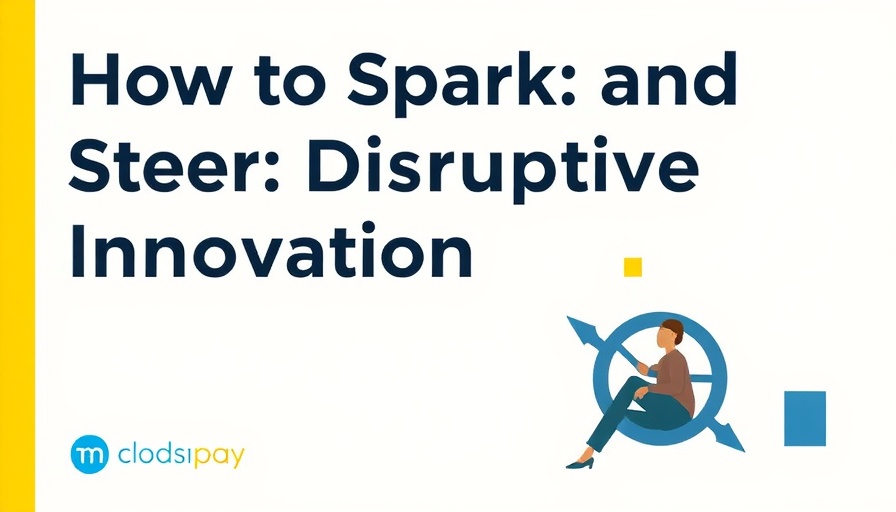
A Spark for Change: Understanding Disruptive Innovation
Disruption is not merely a buzzword; it’s a powerful force reshaping industries at an unprecedented pace. Often, entrepreneurs and businesses struggle to react until it’s too late, stuck in a cycle of analysis instead of action. History has shown us that those who wait for clarity often miss the wave of innovation that can define not just their company, but entire markets.
Embracing the Unseen: How Small Changes Lead to Major Breakthroughs
Disruption can originate from small, seemingly inconsequential ideas. As Scott D. Anthony, an expert in innovation, notes, it might creep in through modest experiments or overlooked proposals that may not initially fit traditional business models. This perspective is vital for entrepreneurs aiming to stay ahead; instead of shying away from experimental approaches, they should consider these unique ideas as potential catalysts for change.
Real-World Applications: Lessons from Industry Leaders
Consider Airbnb, which transformed the travel sector by offering unique lodging alternatives, or Netflix, which revolutionized entertainment with on-demand streaming. Their success stories illuminate how addressing consumer needs with innovative ideas can yield substantial market share and foster sustainable growth. In similar fashion, industries ranging from healthcare to automotive are undergoing transformations fueled by technology and innovative thinking.
The Importance of Agility in Business
In a landscape dominated by rapid shifts, flexibility is key. Entrepreneurs and established businesses alike must foster a culture of agility, ensuring they can pivot when disruption arises. This means not only staying attuned to the needs of their customers but also being prepared to adjust strategies in response to changing demands and competitive pressures.
Fostering a Culture of Innovation: A Pathway to Growth
Creating an environment that encourages innovative thinking is essential for any organization looking to navigate disruptive change. This starts at the top; leadership must champion new ideas, support experimentation, and view failure as a learning opportunity rather than a setback. By instilling this mindset, businesses can cultivate a workforce adept at not just weathering disruption, but actively driving it.
Actionable Insights: How to Prepare for Disruption
For entrepreneurs and small business owners seeking growth, understanding and leveraging disruptive innovation is crucial. Here are key takeaways:
- Stay curious and open to new ideas, even if they initially seem unorthodox.
- Engage with your customer base to understand their evolving needs and preferences.
- Remain agile; be prepared to modify your business model based on market feedback.
- Invest in technology and skills development to keep pace with industry advancements.
- Foster a culture that embraces change and encourages creative problem solving.
Disruption is inevitable. By being proactive in embracing innovation, entrepreneurs can not only survive but thrive, emerging as leaders in their respective fields. The businesses that act decisively today will shape the industries of tomorrow.
As the world evolves, the ability to spark and steer disruptive innovation will remain essential for anyone committed to making a lasting impact. Take the leap, embrace change, and lead the charge in this new era of business.
 Add Row
Add Row  Add
Add 




Write A Comment